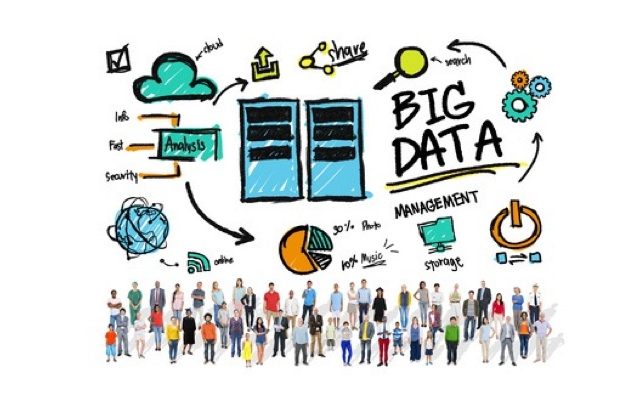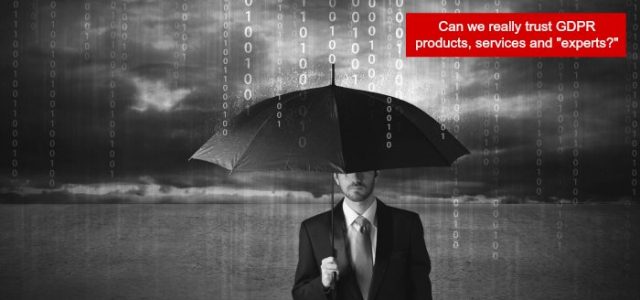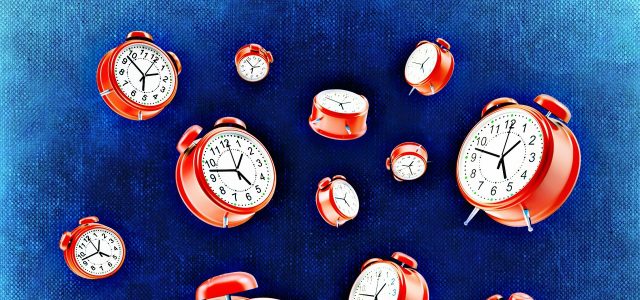Last week I got asked if I know about big data and how you use it in digital marketing. Yes, of course, I do. I’ve been using big data for years when analysing numbers from websites and social media.
I’ve also been fortunate to speak at many conferences where some of the speakers are fully trained ‘big data ninjas’, and I’m lucky to know some of them personally.
Big data is complex information, and it feels as overwhelming as a huge waterfall. It’s only if you present big data in a meaningful way it helps you to make better decisions.
Big data is inconveniently big. It’s hard to handle. Impossible to overview in its raw form.
On Wikipedia, you read: “Big data is a term for data sets that are so large or complex that traditional data processing applications are inadequate. Challenges include analysis, capture, data curation, search, sharing, storage, transfer, visualization, querying and information privacy.”
An acquaintance who is responsible for all digital marketing for a large hotel chain in the US told me about her struggle to start to look at numbers when making decisions. For years, they had been making most decisions based on prejudices, personal experiences, and their ‘gut feeling’.
Every hour their hotels have thousands of guests who are in touch with them, either online, over the phone or staying in one of their large hotels. The information they collect about their customers is big data.
The information they have about their guests comes in many forms. Some are internal data, and some are external. You have access to the data that you asked your guests for before their visit and during their stay, and then new random data that you collect from your guests.
Their challenge was to use all information they have about their customers in a meaningful way so they could make better marketing decisions. To kick this off, they spent several days in a large conference room trying to figure out every possible touch-point that their customers have with them. What they got was a big complex map that told stories about their customers. The map was not easy to overview, or understand. The next step was to set up data collection points that they could follow and then also improve everyone’s web analytics skills.
Analytics is a vital phase of the big data cycle. The most common tools marketers use is Google Analytics, and it tells you about your website visitors. With the help of this information, you can understand what was successful in a campaign and how many online leads it gave. You can analyse your conversion rate, and see how many visits lead to a sale or an inquiry.
It’s when the data shows you meaningful pattern that you can do something with it. To see those patterns in an excel spreadsheet can be hard. That’s why you use visualisation software to do this, there are amazing and beautiful tools that magically help you visualise data.
To start using web analytics in a meaningful way took a while for the hotel chain. It’s not a one-month projects, but more like an on-going continual improvement project where everyone has to be open for new learning and share their knowledge.
Five examples of big data in daily life:
1) The Panama leak was a big and complex project with 11 million documents. And to understand them better, see the pattern the journalists used big data visualisations tool. They used Neo4j and Linkurious to follow a pattern and see where the money went.
2) Eye on the Reef program – people, are helping scientists to find out what’s going on with the reef by sending them updates.
3) The Airports of the Future Project
5) For the health sector, there is so much to be discovered. Last time when I visited my local GP, or ‘house doctor’ as you say in Swedish, the nurse told me that they keep track on patient’s blood pressure, ‘they give us a call and share their blood pressure weekly, and we add it into the patients journal.’ Right now they collect the information manually. In the future, it will be done over a digital application on your smartphone, and you may send it to your doctor if you wish to.
We will use new personal digital technology in the future. We already have the fitness bracelet and different health apps. We will track all kind of body functions, sleep, movement, pulse, blood pressure, periods, hormones, blood, saliva, and weight. Then we will connect this with our smartphone, and start to see graphics and other visualisation tools, and share this with our doctor. There is a lot of medical issues that you can keep track of and prevent this way.
With so many new digital devices we are collecting and storing more data than ever. One question we need to ponder is how we will use it, and how it can be helpful. More tracking tools will be developed, it will give us more data, and they may help us to make better decisions.
How many people who are working in digital marketing are big data ninjas? Not that many, unfortunately. Big data is complex, and by collaborating and sharing skills you can explore what it means to your organisation.
Read more about big data here.
********
Thank you for reading. I read all tweets, emails, and messages, so please get in touch if you have any questions or thoughts.
Sign up to my Digital Leadership Inspiration newsletter here.
Article by channel:
Everything you need to know about Digital Transformation
The best articles, news and events direct to your inbox
Read more articles tagged: Featured






